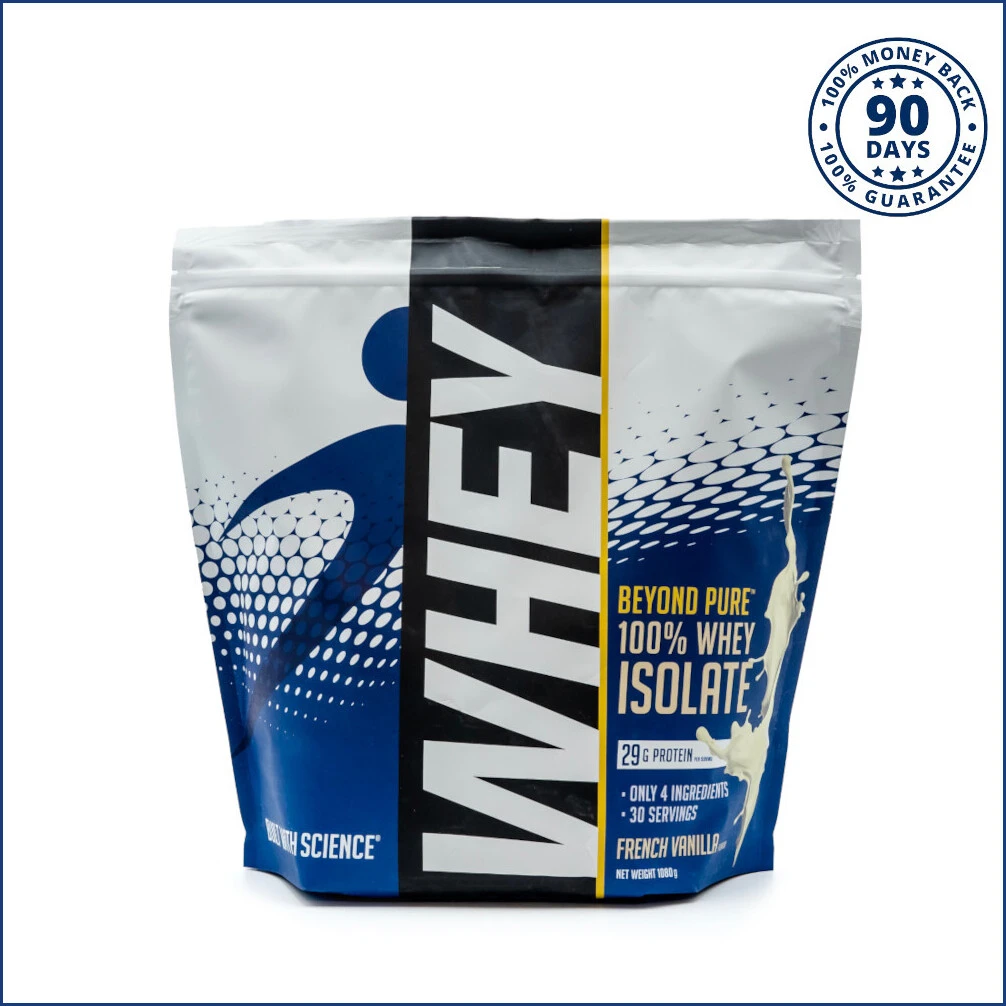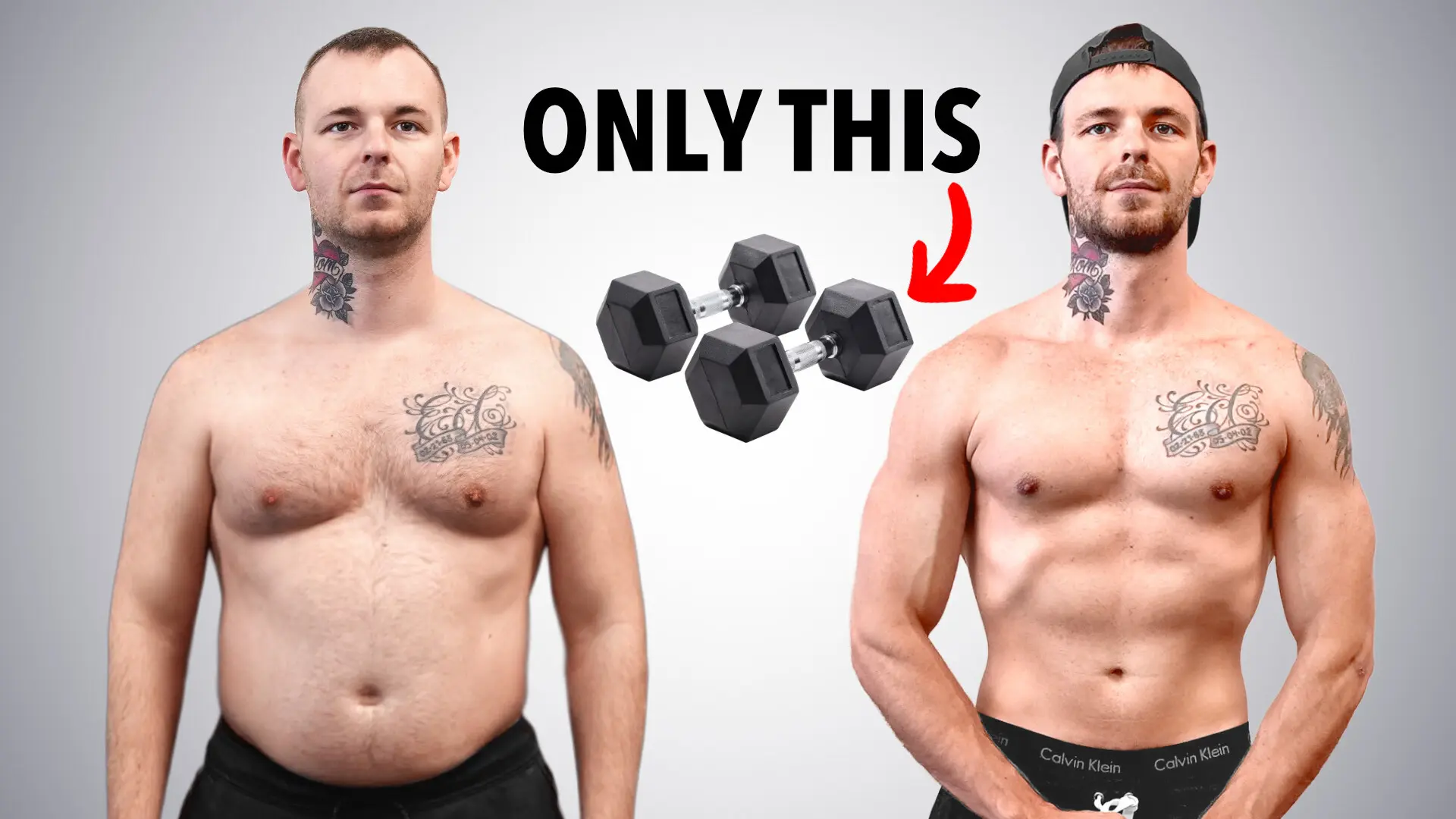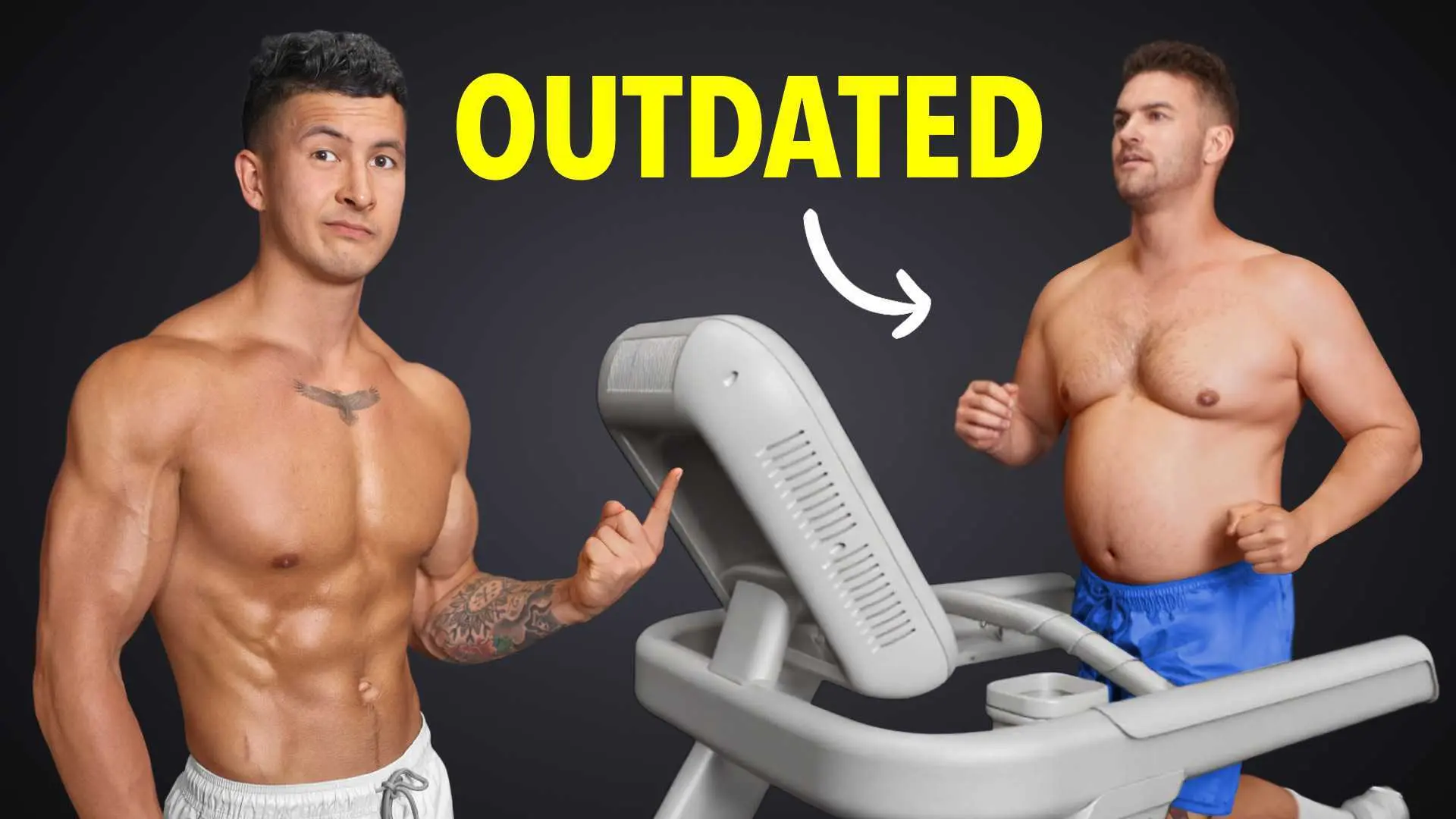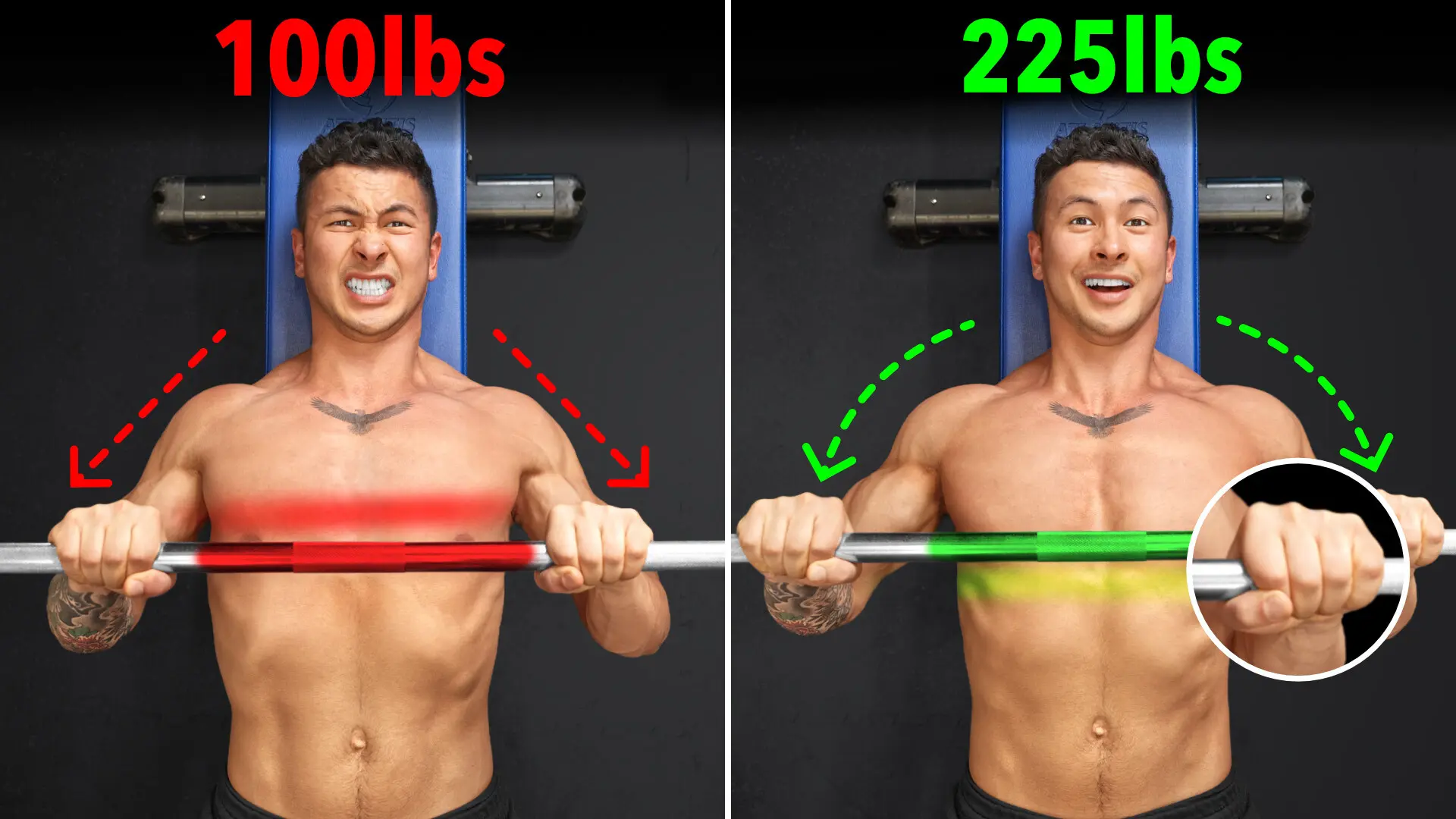
How To Destroy Visceral Fat In 30 Days
You can see your belly fat. You can grab it. But the most dangerous fat? You can’t see it at all. It’s called visceral fat, and here's how you can destroy it in 30 days.
This is the belly fat no one wants, but most people have.
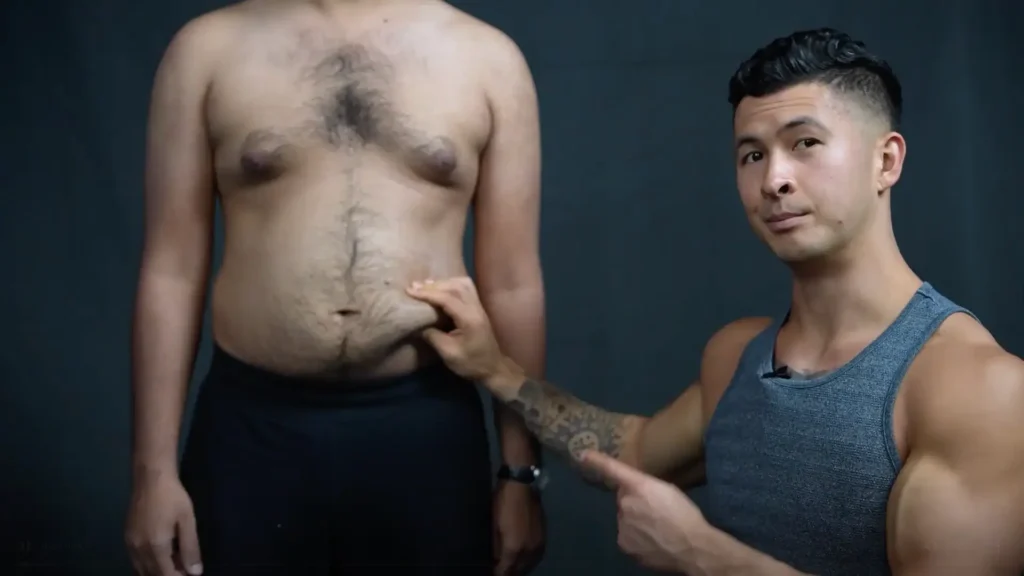
It’s visible, and you can literally pinch it. But that’s just one type of belly fat. While everyone focuses on what they see, there's a hidden layer of belly fat called visceral fat. Belly fat and visceral fat are often confused, but they're not the same.
The thing about visceral fat is that it can not only make your gut look bloated, but it wraps around your organs, pumping out inflammatory molecules linked to heart disease and even early death. You might be like, ‘Well, Jeremy, if visceral fat is so bad, I’ll just zap it with liposuction.’
Nope.
Even a surgeon can’t get to your visceral fat. But you can!
Visceral fat is actually easier to get rid of than belly fat. With the right plan, you can see and feel it decreasing in just 30 days, just like my brother-in-law, Dayton.

The funny thing about Dayton is that everything on him is small ... except his belly.
He’s actually not overly “fat” anywhere else, so it was surprising when his DEXA clocked him in at 33% body fat. But with 1,200 grams of visceral fat hiding deep in his gut, it makes sense. That’s far higher than what Kevin has, even though he’s at 38% body fat … and 50x more than what I have.
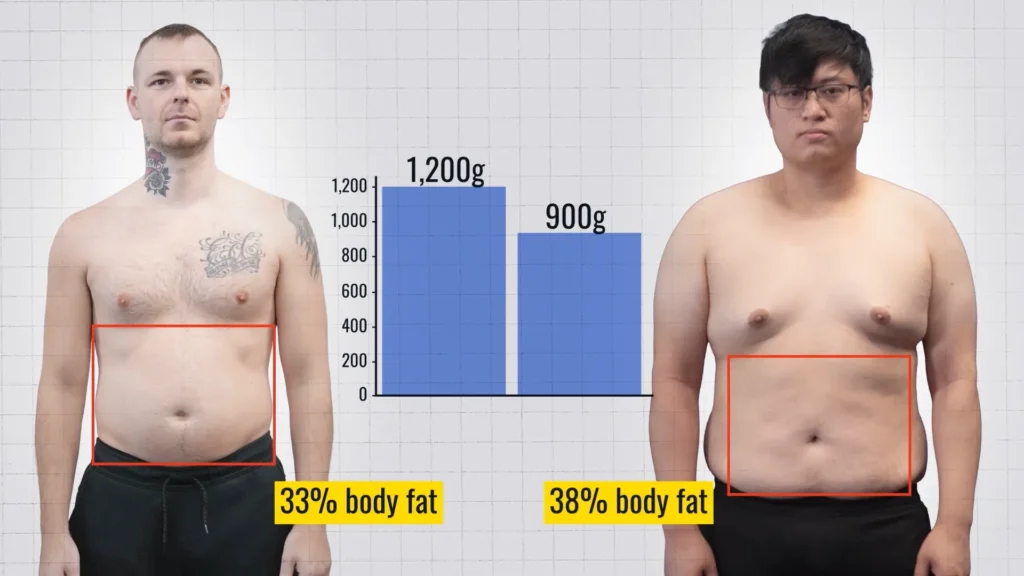
But after he followed the plan I’ll share with you today, his gut quickly tightened up, and after just 12 weeks, his visceral fat dropped by 50%.
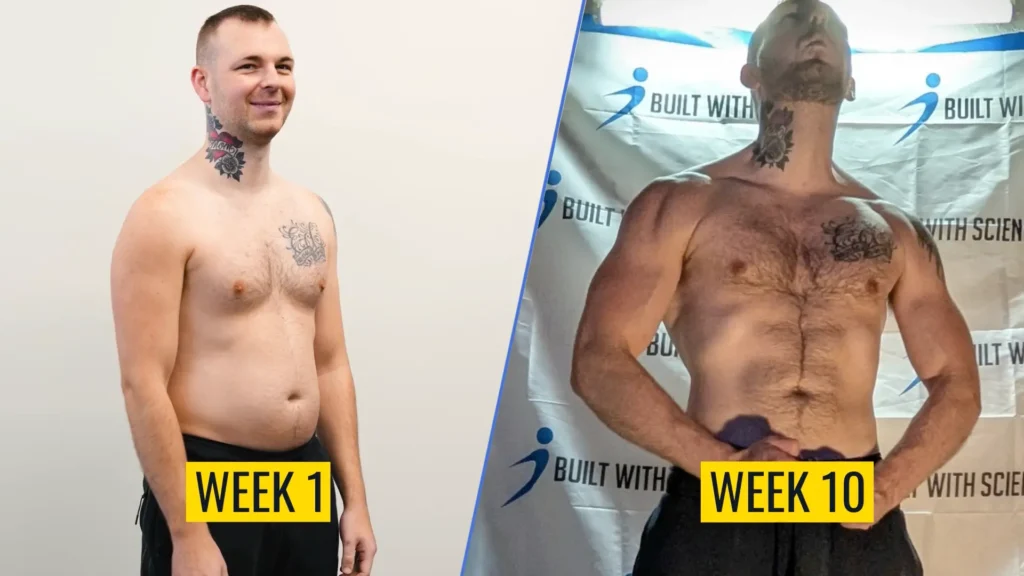
What Increases Visceral Fat?
With “normal belly fat”, there are no foods that directly increase it.
It’s all about how many calories you consume. But that’s not necessarily the case with visceral fat. If two people ate the exact same amount of calories, one of them could store way more visceral belly fat than the other because of certain foods they’re eating.
Saturated Fat
In a 2014 experiment, scientists put this to the test.
They took 39 healthy adults and split them into two groups. The researchers overfed each group with an extra 750 calories per day from muffins. But in ...
- Group 1: The muffins were made using polyunsaturated fat. This is the fat you find in food like fish, nuts, and seeds.
- Group 2: The muffins were made using saturated fat instead. The fat you find in butter and fatty meats.
After 7 weeks of eating these muffins, both groups gained the same amount of weight.
But group 2, the one that ate saturated fats, gained double the amount of visceral belly fat as group 1. In fact, group 1 didn’t just gain less fat, they actually ended up building a little more lean mass as well.
But How Much Saturated Fat Is "Too Much"?
But exactly how much saturated fat is “too much”?
Well, most sources suggest keeping your saturated fat intake to less than about 20 to 30 grams per day … that’s this much butter (3 tablespoons).

And when we scanned Dayton’s favorite ribeye steak dinner with our Built With Science+ app, which I got him to start tracking his diet with, it contained almost 50g of fat, with almost half of it being saturated fat.
And don’t forget, that’s just one of his meals.
On some days, he consumed over 50g of saturated fat with his breakfast and lunch.
How To Get Rid Of Visceral Fat: Balance With Unsaturated Fats
But this doesn’t mean you should completely cut out these foods. Just balance them out with more unsaturated fats.
Instead of having really fatty meat like ribeye every day, now Dayton has it just once or twice a week. He also balances it out with fatty fish, which are rich in more “unsaturated fats”, and chooses leaner cuts of meat when possible.
Swapping ribeye steak for top sirloin steak already drops his saturated fat intake by 15 grams.
It’s also worth noting that grass-fed meats tend to be lower in saturated fats and the unsaturated fats we want, but the difference is honestly quite small.
For more realistic swaps, here’s a list of the biggest “culprits” for saturated fats, as well as a list of the best foods you’ll want most of your daily fats to come from.

But here’s where food choices get even more important.
Some people seem to be genetically more likely to store visceral fat, especially those of Asian, Indian, or Hispanic descent.
But is that really just genetics? Or could it just be because their cultural diets are usually higher in the next food that’s been shown to increase it? I honestly didn’t realize this, but many Asian dishes I love are actually packed with ...
Added Sugar
Not to mention, everyone’s favorite bubble tea can have up to 50 grams of it. Which might help explain why the average Taiwanese adult consumes almost double the recommended daily sugar limit (25g vs 43g). But what’s so bad about added sugar?
The Relationship Between Added Sugar And Visceral Fat
Well, added sugar is actually made up of two different types of sugar: glucose and fructose.
And back in 2009, scientists wanted to find out if one of these types of sugar contributes more to visceral belly fat. So they had people drink the exact same number of calories, but from a drink that was either sweetened with pure fructose or pure glucose.
After 10 weeks, only the fructose group showed a significant increase in visceral belly fat.
On top of that, the fructose group’s insulin sensitivity worsened, meaning their bodies had a harder time handling carbs.
Now, when you hear “fructose,” you might think of fruit — and you’re right, fruit does contain fructose.
But fruit also comes with fiber and water, so it’s incredibly hard to overeat, especially at the amounts you’d need to for it to start affecting your visceral fat.
But table sugar and high-fructose corn syrup?
Those are the real culprits, and foods you might not even expect are loaded with them, not just bubble tea. Examples include:
- Cereal
- Granola
- Sweetened yogurt
- Juice
- Jam
- And even condiments like ketchup

However, rather than simply eliminating these, a more effective approach is to replace them with something that can help decrease your visceral fat, rather than increase it.
Protein. How?
How To Lower Visceral Fat With Protein
Well, back in 2005, scientists took a group of people and didn’t instruct the participants to do anything aside from double their current protein intake.
Surprisingly, despite not being instructed to eat less or make any other changes, they naturally began eating fewer calories and lost over 10 pounds in just over 12 weeks, with almost all of it being pure fat.
While the study didn’t measure visceral fat directly, the large reductions in total fat mass, combined with the appetite-suppressing effects of protein, create the ideal conditions for reducing visceral fat.
Wait, wait, wait.
Smart Sugar Swaps
Before you go dumping out Grandma’s cookie jar and filling it with chicken breast, there are easier ways to swap sugar for protein without actually changing much.
For example, my mom is a doctor, and even though she knows better, she couldn’t break her habit of loading her morning coffee with cream and 2 heaping spoonfuls of sugar.

So instead of fighting with me over her sugar stash, I just give her our French Vanilla Built With science protein powder.
She mixes half a scoop of it with a tiny bit of milk and pours that in her coffee.
And now, each month, instead of consuming 750 grams of sugar plus 45 grams of saturated fat from her cream, she’s getting an extra 450 grams of protein.
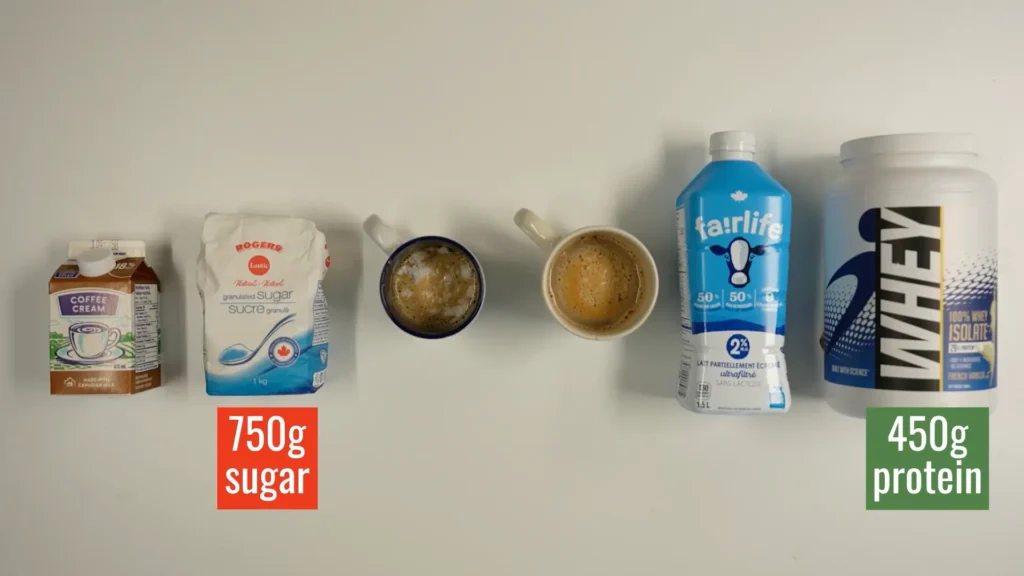
Whereas Dayton’s culprit was Chicago Mix popcorn.
So I got him a bag of plain microwaveable popcorn, topped it with a mix of our Built With Science salted caramel protein, sugar-free syrup, and cheddar seasoning, popped it in the freezer for 10 minutes — and bam, cuts out almost 100 grams of sugar and replaces it with 29 grams of protein.
But popcorn’s just the beginning; here are some more ways you can easily replace sugar with protein.
And here’s how you can actually apply all of this to a full day of eating.
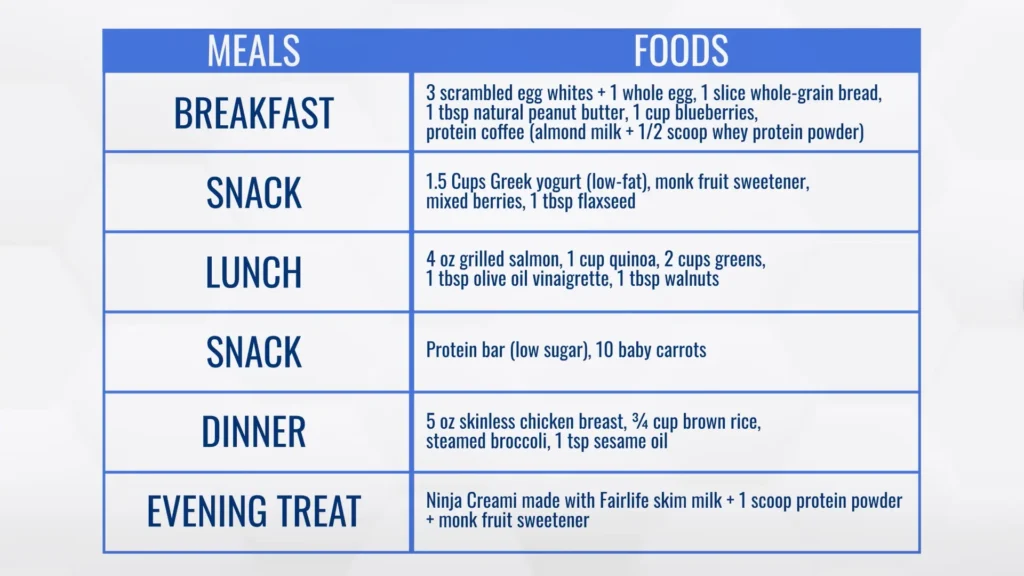
This is just the diet part of the full 30-day plan I’ll show you later on. But while this meal plan can help prevent you from gaining MORE visceral fat, it won’t do much to actually get rid of it if you’re still ...
Eating Too Many Calories Overall
The good news, though, is that as soon as you get into a calorie deficit, visceral belly fat is typically the first fat your body mobilizes for energy. This can happen even if you’re still consuming a high amount of saturated fat and sugar, although I wouldn’t recommend it.
It’s why research has shown that even just losing 10 lbs can shrink visceral fat by as much as 30%, which is the closest thing to “spot reduction” as it gets.
So, How Many Calories Should You Eat?
How many calories you should eat will be different from someone else.
For example, my fitness app found that I achieve my best results by eating around 2,300 calories per day, whereas for Dayton, it suggested he needs to go a bit lower (2,000 calories per day). It’ll continue to adjust his calories as he progresses, but hopefully he sticks with the plan, because I’ll be documenting his transformation every step of the way for a future article.
However, although a calorie deficit is the most effective tool for burning off visceral fat, there's still one more strategy that has been shown to decrease it, even if you’re not in a calorie deficit and even if you don’t lose any weight.
Bonus Visceral Fat Reduction Strategy
So you know how everyone tries to target their belly fat with special exercise? Well, unfortunately, it doesn’t seem like that’s possible. But visceral belly fat might be different.
Researchers first noticed this in 2023, when they conducted one of the largest studies to date examining the impact of cardio on visceral fat.
First, they found that all types of exercise were great for reducing visceral fat. However, when they examined the data more closely, they identified two types of exercise that stood out above the rest:
- Moderate to high-intensity cardio
- Interval training
Unlike your stubborn love handles just lounging under your skin, visceral fat seems to actually listen when your body sends in the fat-mobilizing hormone known as catecholamines, which spikes during high-intensity exercise.
While this might make it sound like you need to kill yourself with endless all-out sprints, that’s not the case.
How To Lower Visceral Fat With Exercise
The exercise types that torched visceral fat in this meta-analysis required getting above 75% of your max heart rate — not a walk in the park, but far from an all-out sprint.
Even better, these workouts don’t take long. If you do them right, even just short 15 to 25 interval cardio sessions done 2 to 3 times per week are enough to make a measurable dent. Here’s how to do them.
For each interval session, pick an exercise you can go pretty hard at.
One paper found that running could be slightly more effective than cycling at reducing visceral fat, but there were too many limitations for it to be meaningful. I personally enjoy sprints, especially when it’s nice out, but I’ve found that cycling, rowing, or even the elliptical are much easier to recover from.
Spend 5 minutes warming up, then when you’re ready, go hard for 30 seconds.
It doesn’t have to be all-out, but it should leave you breathing hard enough that you wouldn’t be able to hold a conversation right after. Then, slow it down and recover for 90 seconds. You’ll wanna repeat that for 6–10 rounds.
However, the downside of interval training is that it’s tough and takes time to recover from, so you can’t do it too often.
And what seems to be most important for reducing visceral fat is how much exercise you do in total, rather than just how hard you go. Which is why, especially on your off days, set a walking goal of at least 8,000 steps. It’s low-impact, easy to stick to, and still helps chip away at your visceral fat over time.
Here’s an example of what this could look like for the next 30 days.
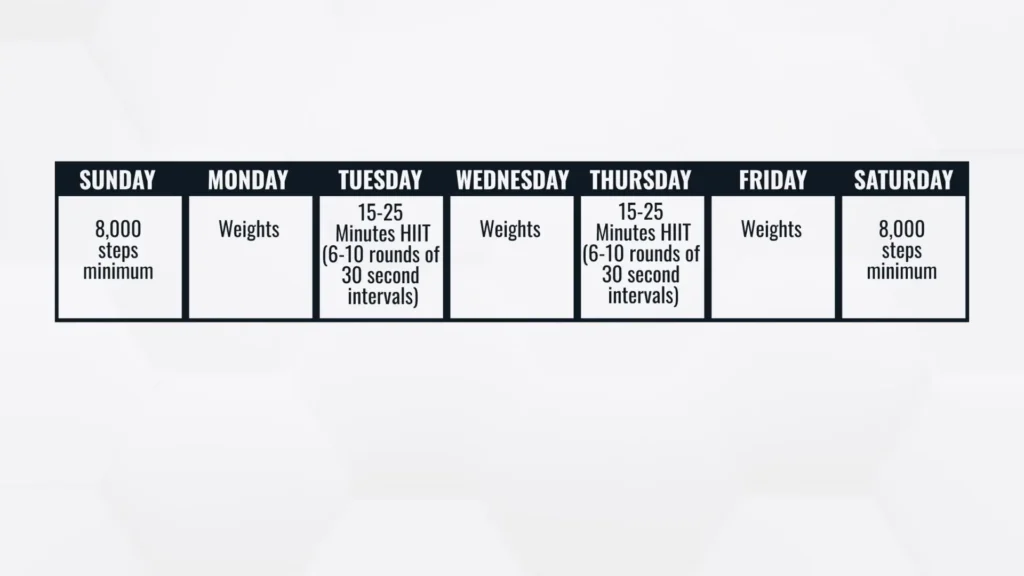
Dayton’s already seen impressive results by applying this, and with our BWS+ app, he was able to easily track his nutrition and get personalized workouts every week to guide him every step of the way.
You can try it too for 2 weeks free here:
Click the button below to try the BWS+ app for 2 weeks, for free, no strings attached:
↓
TL;DR
- Visceral fat is the dangerous fat that wraps around your organs. You can't see it, it can’t be pinched like belly fat, but it’s far worse for your health.
- Unlike belly fat, visceral fat is influenced by the types of fat and sugar you eat, especially saturated fat and added sugar, not just your calorie intake.
- Balancing your diet with more unsaturated fats and protein (instead of sugar) helps lower visceral fat, even without strict calorie counting.
- That said, a calorie deficit is the most effective way to burn visceral fat, and it’s usually the first fat your body sheds once you're in that deficit.
- Interval cardio and moderate-to-high intensity exercise have been shown to specifically target visceral fat, even without weight loss.
What's Next?
But while what I shared today can help tighten up your midsection, to get abs that actually pop, there are 2 exercises I’d add. Check out this article to see what the only 2 exercises that built my six pack abs are.
Thanks for sticking to the end, and I’ll catch you next time!

